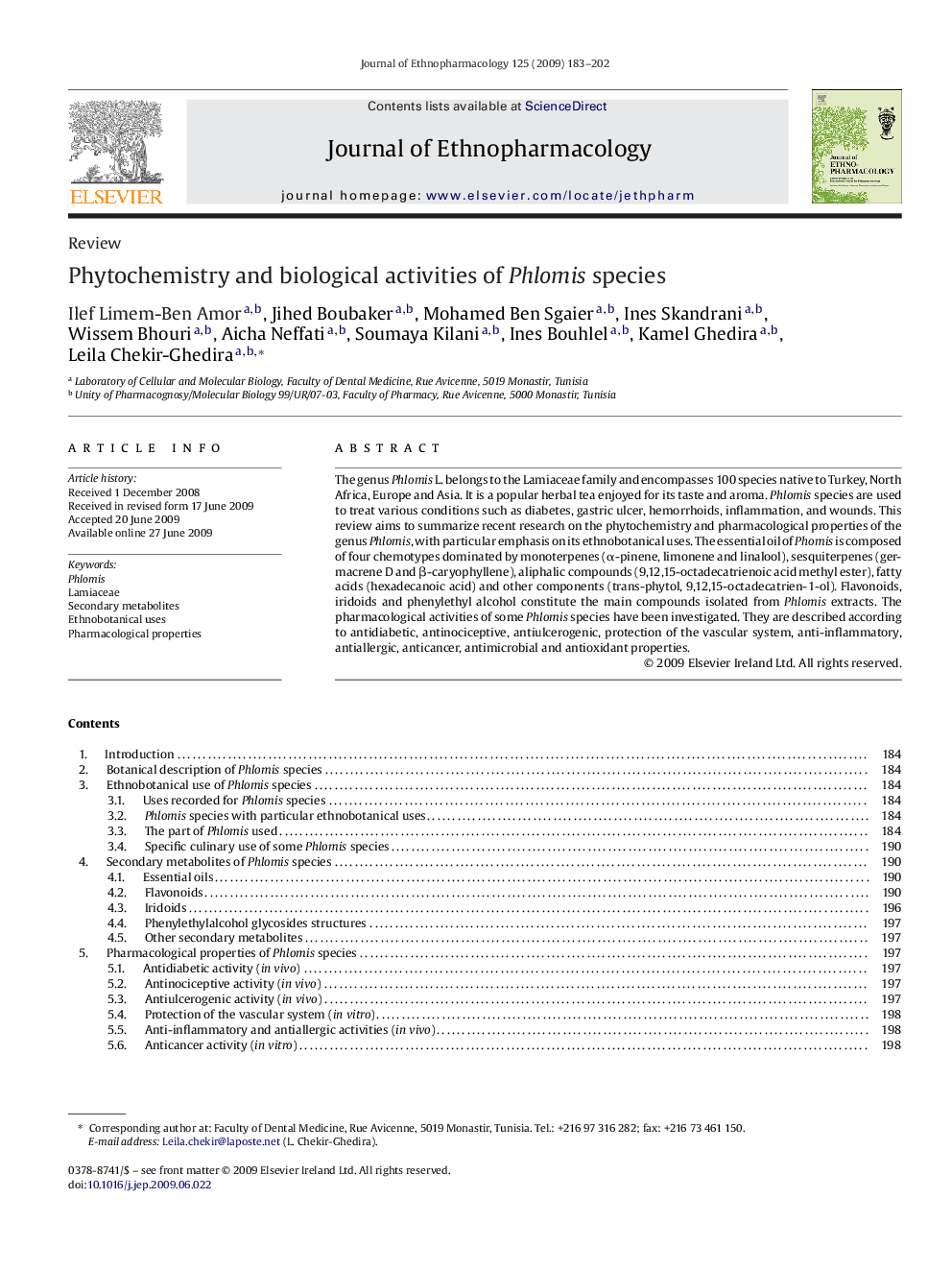| Article ID | Journal | Published Year | Pages | File Type |
|---|---|---|---|---|
| 2546238 | Journal of Ethnopharmacology | 2009 | 20 Pages |
The genus Phlomis L. belongs to the Lamiaceae family and encompasses 100 species native to Turkey, North Africa, Europe and Asia. It is a popular herbal tea enjoyed for its taste and aroma. Phlomis species are used to treat various conditions such as diabetes, gastric ulcer, hemorrhoids, inflammation, and wounds. This review aims to summarize recent research on the phytochemistry and pharmacological properties of the genus Phlomis, with particular emphasis on its ethnobotanical uses. The essential oil of Phomis is composed of four chemotypes dominated by monoterpenes (α-pinene, limonene and linalool), sesquiterpenes (germacrene D and β-caryophyllene), aliphalic compounds (9,12,15-octadecatrienoic acid methyl ester), fatty acids (hexadecanoic acid) and other components (trans-phytol, 9,12,15-octadecatrien-1-ol). Flavonoids, iridoids and phenylethyl alcohol constitute the main compounds isolated from Phlomis extracts. The pharmacological activities of some Phlomis species have been investigated. They are described according to antidiabetic, antinociceptive, antiulcerogenic, protection of the vascular system, anti-inflammatory, antiallergic, anticancer, antimicrobial and antioxidant properties.
